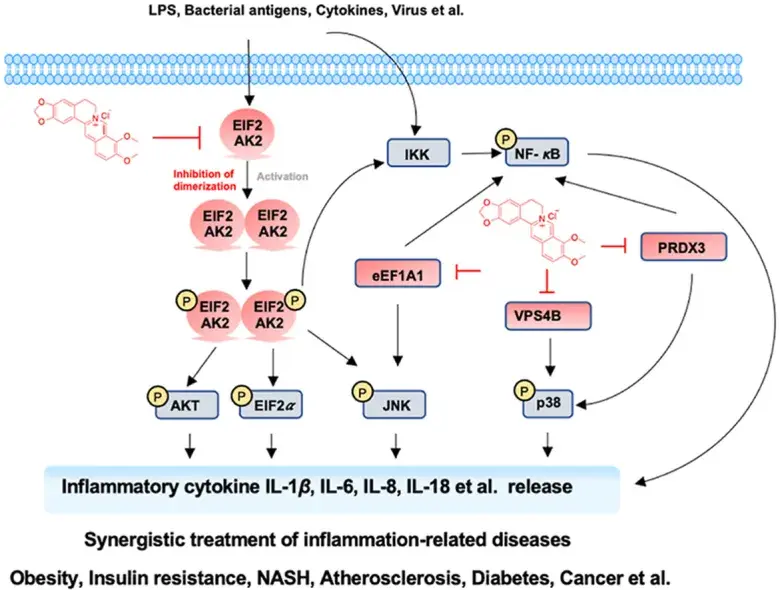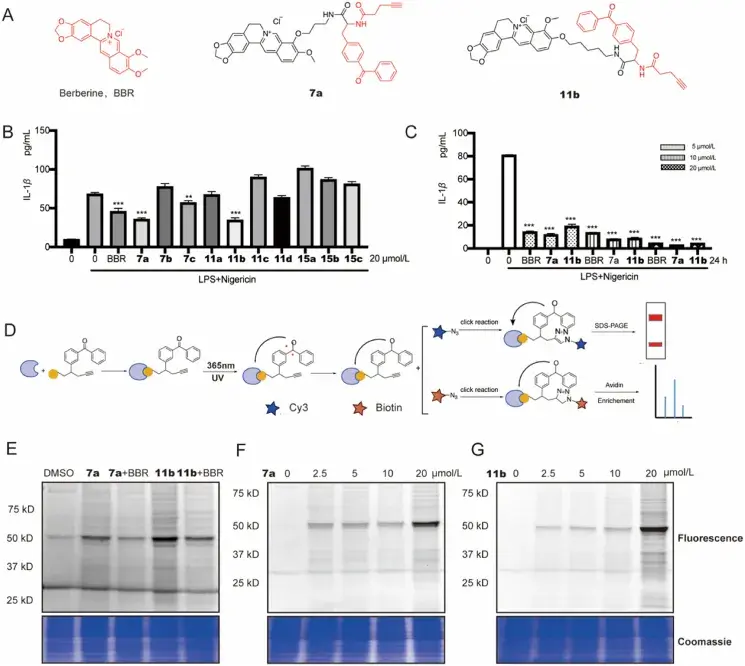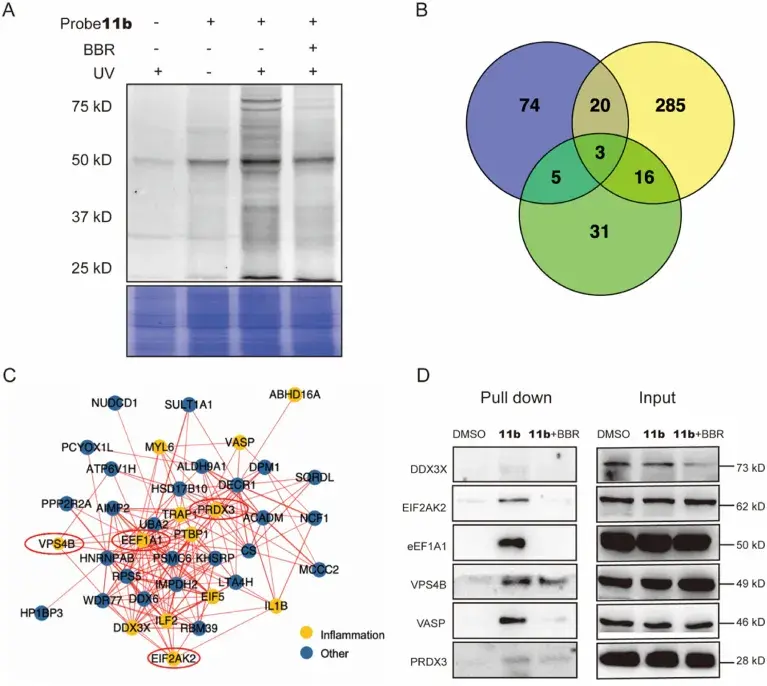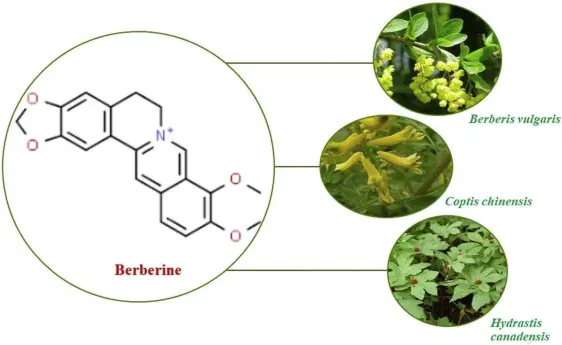Discovery of EIF2AK2 as a Direct Key Target for Berberine’s Anti-Inflammatory Effects

The Importance of Berberine
Berberine, a natural compound with a long history in traditional Chinese medicine, has been recognized for its wide-ranging pharmacological activities, including benefits for type 2 diabetes, hyperlipidemia, atherosclerosis, and Alzheimer’s disease. Despite the identification of several Berberine targets, such as UHRF1, RXRα, NEK7, and MKK7, the complex mechanisms underlying its broad anti-inflammatory effects have remained elusive.
This study addresses these gaps by leveraging advanced proteomics techniques to pinpoint BBR's critical protein targets involved in regulating multiple inflammatory pathways.

Methodology and Key Findings
1.Target Identification Using ABPP
Activity-based protein profiling (ABPP) was employed using novel photoaffinity probes of Berberine to identify its direct protein targets in inflammatory pathways. The team discovered four primary targets:
EIF2AK2 (PKR)
eEF1A1
PRDX3
VPS4B
Among these, EIF2AK2 emerged as the most significant target, binding to Berberine with a dissociation constant (Kd) of 7.12 μmol/L. This interaction regulates key inflammatory pathways, establishing EIF2AK2 as the pivotal mediator of BBR's anti-inflammatory effects.
2.Synthesis of Functional Probes
To enhance target identification, Berberine-derived photoaffinity probes were synthesized and tested for their ability to suppress inflammation in THP-1 cells. Probes 7a and 11b exhibited superior inhibitory effects on IL-1β, IL-6, IL-8, and MCP-1 compared to BBR alone.
3.Fluorescent Labeling and Validation
Through SDS-PAGE and fluorescence scanning, the researchers validated that 11b could specifically bind to its targets under UV illumination, and this binding was competitively inhibited by Berberine. This confirmed the mechanism of BBR's target engagement.
4.Comprehensive Proteomics Analysis
Proteomic analysis identified 44 potential targets linked to inflammation-related pathways. Of these, EIF2AK2 and three others (eEF1A1, PRDX3, VPS4B) were confirmed as direct targets via immunoblotting experiments.

Implications of EIF2AK2 as a Target
EIF2AK2 plays a central role in coordinating inflammatory responses by regulating multiple signaling pathways. BBR’s ability to bind specifically to EIF2AK2 highlights its potential as a therapeutic agent not only for inflammatory diseases but also for conditions like metabolic disorders and neuroinflammation.

Conclusion
This study represents a significant step forward in understanding Berberine's pharmacological mechanism. By identifying EIF2AK2 as a direct key target, the research opens new avenues for developing targeted therapies based on Berberine. The findings not only enhance the scientific understanding of berberine’s anti-inflammatory properties but also offer a solid foundation for drug discovery in inflammatory and other related diseases.










